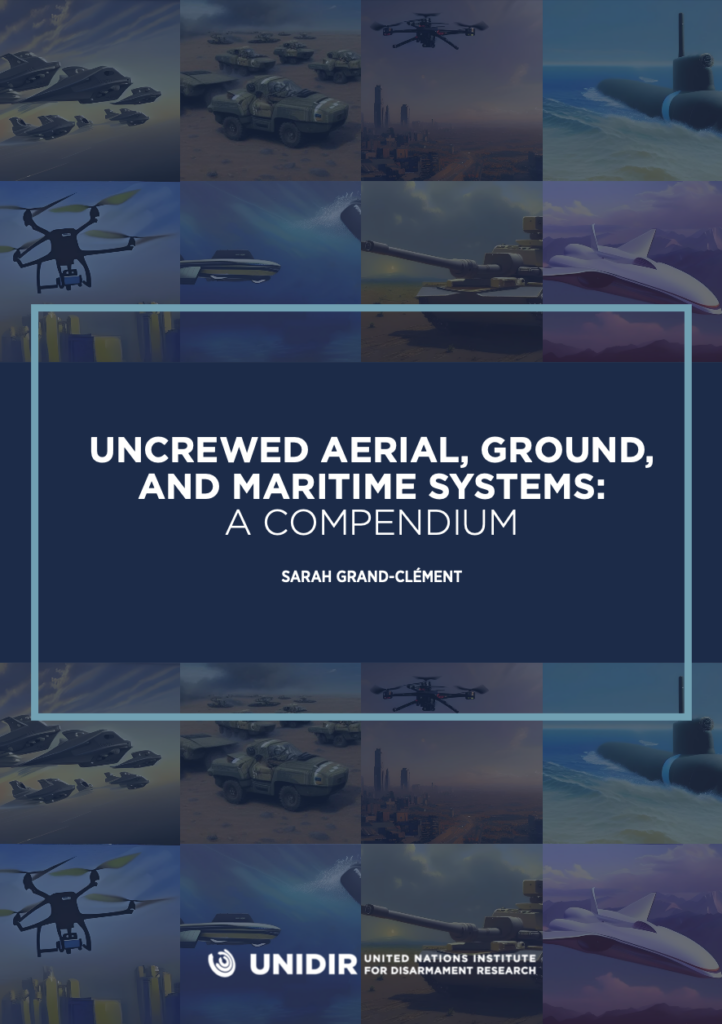This compendium is intended to provide policymakers, diplomats and other non-technical interested parties with an introductory overview and comparison of technological developments and their security implications relating to uncrewed aerial, ground, and maritime systems. In 2022, UNIDIR released primers for each of the three domains in which uncrewed systems operate (air, land and sea). While each primer gives an in-depth introduction into each type of uncrewed system, this compendium provides a comparative overview that highlights the common developments and security implications of these systems, as well as what distinguishes them. The focus of the compendium is on describing the main areas of technological innovation and development related to the key components that comprise uncrewed systems, outlining the anticipated areas of progress and potential concern, as well as areas of overlap between key enabling technology across the three types of systems.
The compendium, as well as the primers, also serve as technical guides on issues relating to uncrewed systems for use within frameworks and processes where such systems are relevant and discussed, such as the Group of Governmental Experts (GGE) on the continuing operation and relevance of the United Nations Register of Conventional Arms (UNROCA) and its further development, the Conference of States Parties to the Arms Trade Treaty, and the GGE on Lethal Autonomous Weapons Systems.
Sponsor Organizations: Germany (Conventional Arms and Ammunition Programme) and Germany, the Netherlands, Switzerland and Microsoft (Security and Technology Programme).
Citation: Sarah Grand-Clément (2023) "Uncrewed Aerial, Ground, and Maritime Systems: A Compendium", UNIDIR, Geneva, Switzerland. https://doi.org/10.37559/CAAP/23/ERC/05
